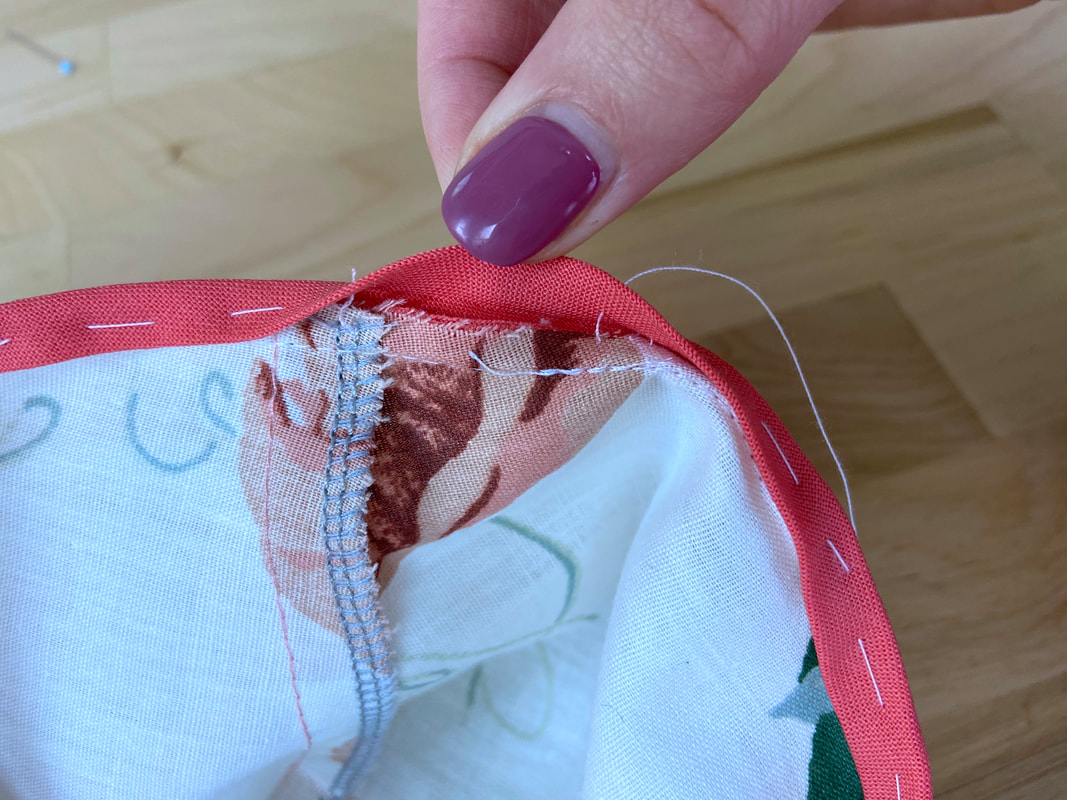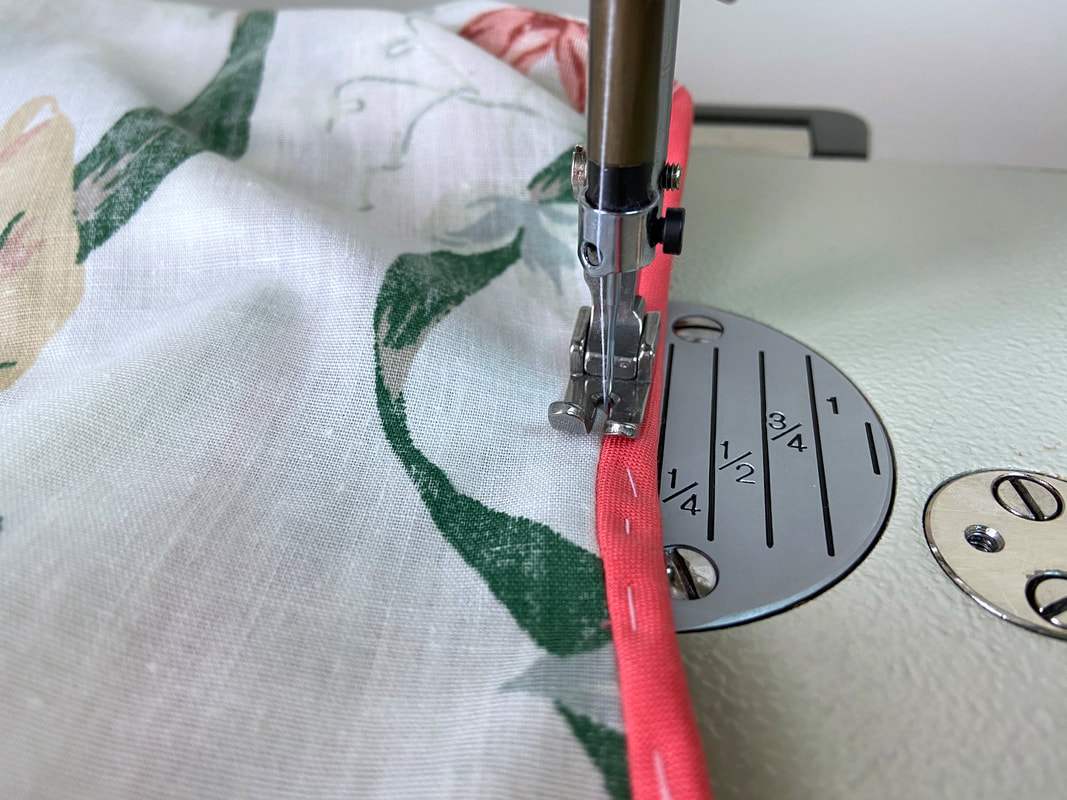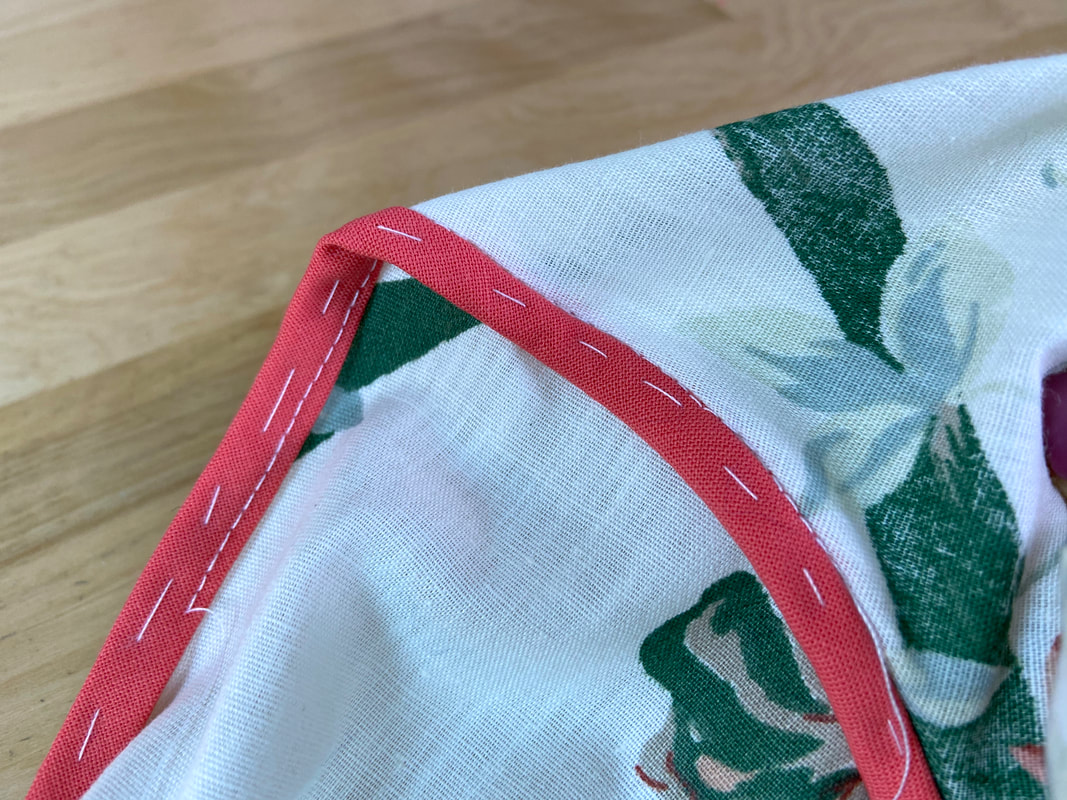How To Machine Stitch An Exposed Bound Armhole Edge: Invisible Stitch Finish
If you are not a big fan of hand stitching and do not particularly enjoy the casual look of a topstitched binding application, there is a clever technique you can use to seal a binding strip by machine, with minimal stitch visibility on the garment's face side.
Here's how to achieve this finish:
Here's how to achieve this finish:
Once the binding has been stitched, fold it over the garment's raw edge. During this process, instead of aligning the binding's open fold with the stitch (visible on the wrong side of the application), place the binding's fold a little past the stitch to fully encase it. The binding's open fold should be aligned about 1/16"-1/8" past this machine stitch. For added stability in the step(s) to follow, hand baste the binding in this position to secure the alignment.
To permanently seal the binding, topstitch directly in the crease or seamline formed by the binding on the garment's face side. This stitch should securely catch the binding edge underneath.
In the finished application, the final stitch will blend into the binding-garment crease on its face side and appear almost invisible. On the garment's wrong side, it is visible as a topstitch applied directly along the binding edge.




